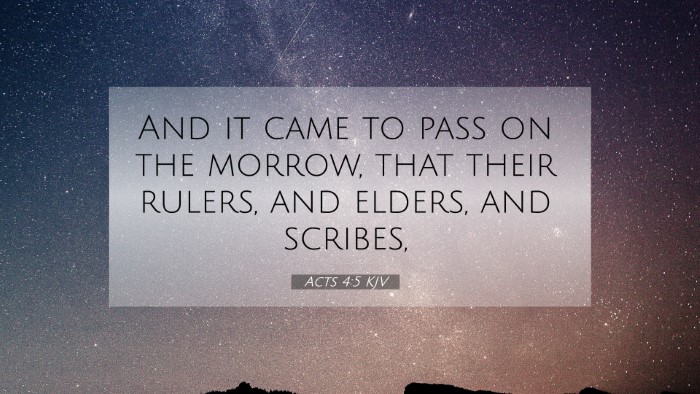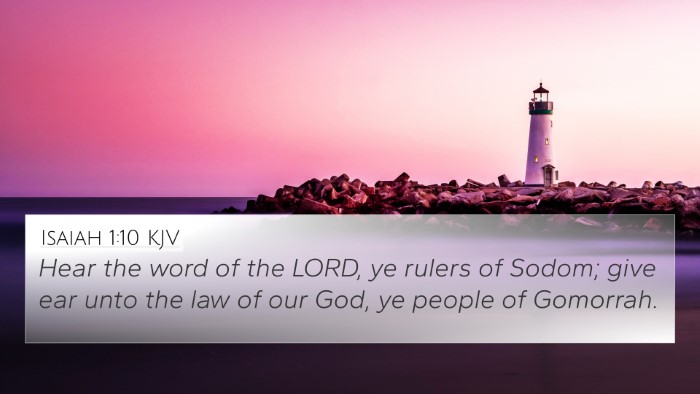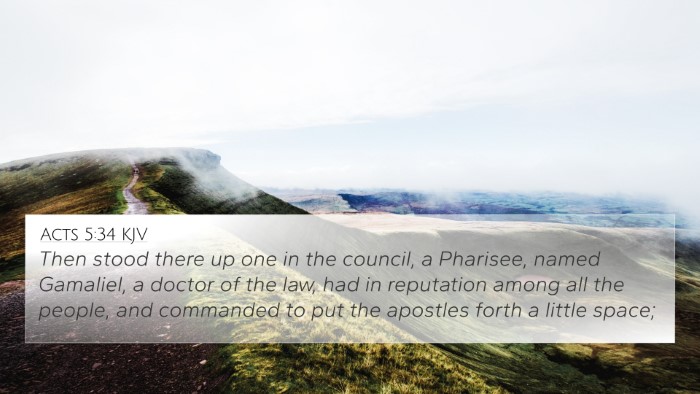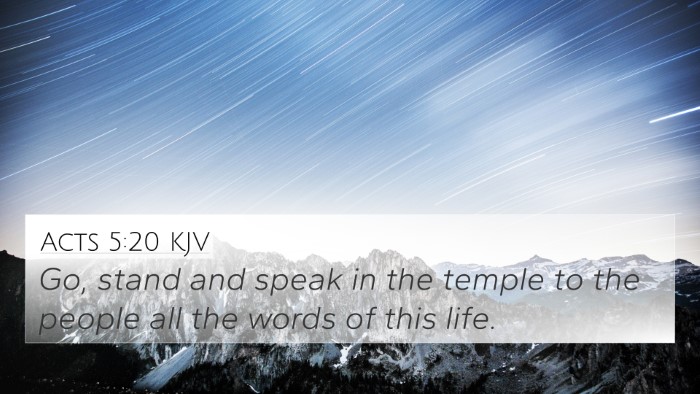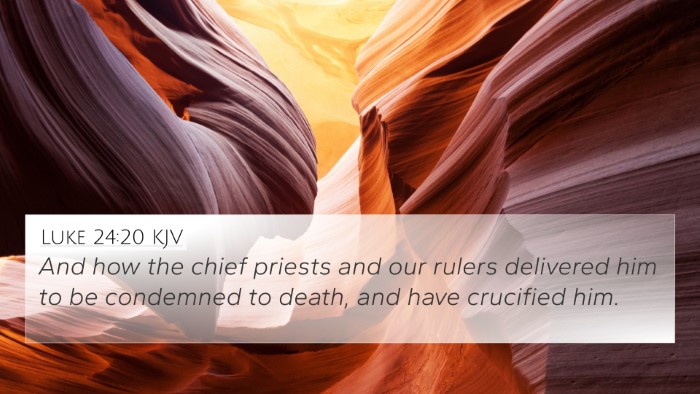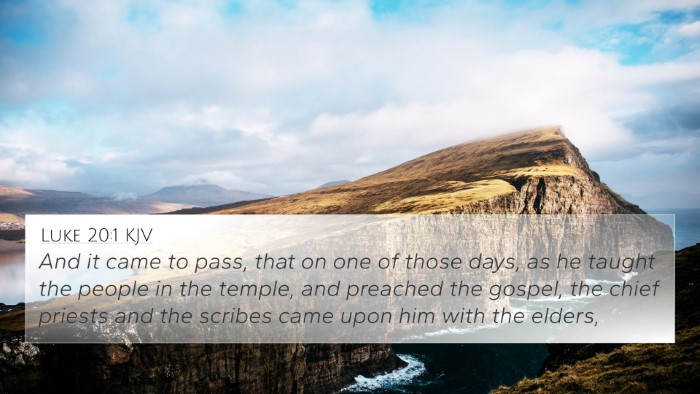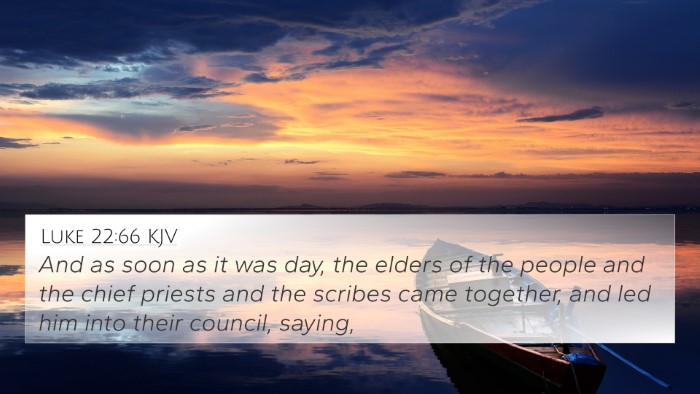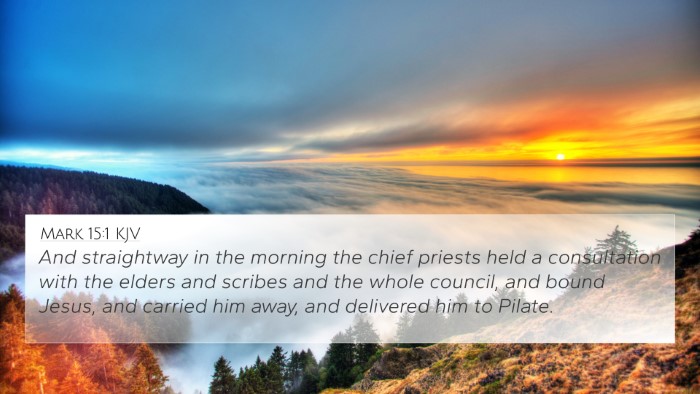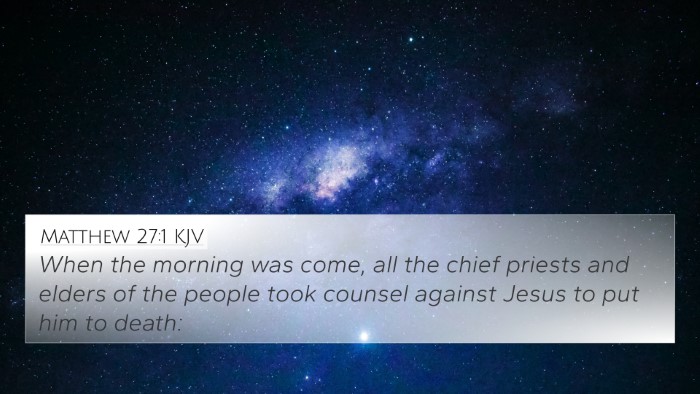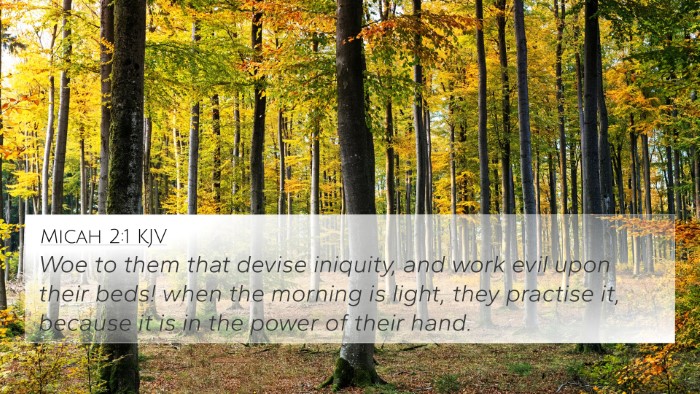Understanding Acts 4:5
Acts 4:5 states:
"And it came to pass on the morrow, that their rulers, and elders, and scribes,"
This verse introduces a pivotal moment following the healing of a crippled man by Peter and John, showcasing the early church's encounters with Jewish authorities.
Summary of Insights
Drawing from the insights of Matthew Henry, Albert Barnes, and Adam Clarke, we can explore multifaceted interpretations of Acts 4:5:
- Contextual Setting: The event described occurs in Jerusalem shortly after the disciples began performing miracles and preaching the gospel.
- Rulers, Elders, and Scribes: These groups represent the Sanhedrin, the Jewish council of the time, illustrating the challenge the apostles faced from established authority.
- Authority of the Early Church: The gathering implies that the apostles were gaining attention and concern from those in power, emphasizing the growth and influence of the Christian movement.
- Miracle of Healing: This event follows the miraculous healing, suggesting that the signs accompanying the apostles' preaching serve as validation of their divine mission.
- Implication of Conflict: The immediate response of the Jewish leaders marks the beginning of persecution against the apostles, which would later escalate throughout the book of Acts.
- Importance of Unity: The assembly of leaders indicates the need for a united front against what they perceivably saw as a threat to their religious tradition and authority.
Bible Verse Cross-References
This verse connects thematically and contextually to several other passages, enhancing our understanding:
- Matthew 10:18: "And ye shall be brought before governors and kings for my sake, for a testimony against them and the Gentiles."
- John 15:20: "Remember the word that I said unto you, The servant is not greater than his lord. If they have persecuted me, they will also persecute you."
- Acts 5:27-29: "And when they had brought them, they set them before the council: and the high priest asked them..."
- 1 Peter 2:13-14: "Submit yourselves to every ordinance of man for the Lord's sake: whether it be to the king, as supreme..."
- Acts 3:1-10: The account of Peter and John healing the lame man, establishing the groundwork for the conflict seen in Acts 4:5.
- Acts 7:58: "And cast him out of the city, and stoned him: and the witnesses laid down their clothes at a young man's feet, whose name was Saul."
- Romans 13:1-2: "Let every soul be subject unto the higher powers. For there is no power but of God: the powers that be are ordained of God."
Thematic Bible Verse Connections
Acts 4:5 doesn't stand alone; it weaves into a larger narrative of Biblical themes, particularly around:
- Persecution of Believers: The continuous theme throughout the New Testament regarding the struggles faced by early Christians.
- Authority and Power: Exploring how God’s authority often challenges human authority in the narratives.
- Demonstration of Faith: Highlighting the acts that the apostles took despite opposition and danger.
Using Cross-References for Deeper Study
For those engaging in cross-referencing Bible study, consider these tools and methods that enhance understanding:
- Bible Concordance: Utilize this resource to find multiple mentions of similar terms and events.
- Bible Cross-Reference Guide: A practical tool for linking thematically connected scripture.
- How to Use Bible Cross-References: Familiarize yourself with cross-reference systems for an enriched reading experience.
- Cross-Referencing Bible Study Methods: Engage in comparative verse analysis to identify and explore similarities and thematic connections.
Inter-Biblical Dialogue
Acts 4:5 acts as a point of dialogue not only within the book of Acts but also across the entire scripture:
- The connection to the teachings of Jesus, particularly around the notion of witnessing in the face of opposition.
- Links between the prophetic messages seen in the Old Testament and their fulfillment through New Testament events.
Conclusion
This verse serves as a pivotal intersection in scriptural narrative, compelling readers to examine the dynamics of early church relationship with authority. The insights gleaned from public domain commentaries reveal the complexities and enduring themes of conflict, faith, and perseverance, providing a rich ground for further study and understanding.
As you engage with Acts 4:5, may you find deeper connections and insights through the practice of cross-referencing, enhancing your study of the Bible and its themes.


